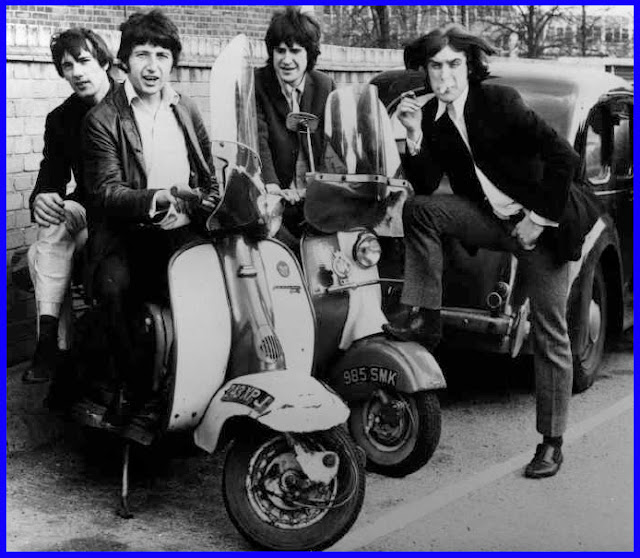Day 2 of our look at the origins of The Who finds On The Flip-Side looking at Young Man Blues. The song was written and recorded as A Young Man by jazz pianists and Tupelo, Mississippi native, Mose Allison. But more on him and that recording later. It is this song, we should note, that was the inspiration for Pete Townshend's magnum opus, My Generation. It's not hard to make the connection -- a young man filled with frustration and searching for a voice of one's own, even if that voice stutters in the face of powerful oppression.
The first recording we feature today is from a bootleg called Keep From Crying which I picked up when in high school (I bought it from my HS Psychology teacher!). The recording appears to have been made on February 9, 1964 at the Scene Club in London. The band was likely going under the name of The Detours that night. Sometime that month they would change their name to The Who (and then briefly to The High Numbers). The band is raw and young and the song, while changed from Allison's piano number, remains largely a jazzy piece. Note that the elder statesmen, Doug Sandom, is still on drums. Keith Moon wouldn't show up for a few months yet.
The Who were among the greatest live bands ever. Okay, I'll say it, in their heyday there was no band as good as The Who when they took to the stage. And that heyday was, luckily, caught on tape six years and five days after our first featured recording on this post. It was Valentines Day of 1970 and the four working class lads from Sheperds Bush UK took to the stage in the college town of Leeds. The second song from that set was Mose Allison's Young Man Blues. And how the boys had grown up. The song is no longer a laid back jazz number, but instead a testosterone fueled explosion. But the amazing thing is, Pete's original arrangement as captured that night at The Scene Club, remains largely intact. The song was slated for release as a single in the US on Decca in September of 1970. They pressed a small but unknown number of records and included a picture sleeve, but never formally released the single. A very few found their way into circulation, making it one damn hard to find 45rpm record.
Ahhhh, Mose the muse. Here is the original recording from the 23 year-old Mose Allison's first album, Black Country Suite, released on the Prestige label in 1957. Cool and laid back and only 1:26 long, it is the unlikely song that inspired a big-nosed kid from the West End of London to challenge the system and grow more confident in his own voice.
Until tomorrow, we'll see you On The Flip-Side!
The Detours perform Young Man Blues at The Scene Club
The Who perform Young Man Blues -- Studio
The second recording is almost as rare as the first. It is a studio recording of Young Man Blues which the boys laid down in October of 1968 as they entered the studio to begin recording their album, Tommy. Pete hadn't quite filled out the song list or even fully fleshed out the story line of Tommy at this point. As such, Pete considered trying to shoe-horn the beloved Young Man Blues into the story line of a frustrated and misunderstood boy bullied into a catatonic state. The arrangement is neither fully like the preceding recording, nor like the following. And, to be blunt, it's not very impressive. Ultimately the usage of the song would be shelved and it would appear only on the beyond-rare 1969 compilation album, The House That Track Built.
The Who perform Young Man Blues -- Live at Leeds
Mose Allison performs A Young Man
Until tomorrow, we'll see you On The Flip-Side!




























